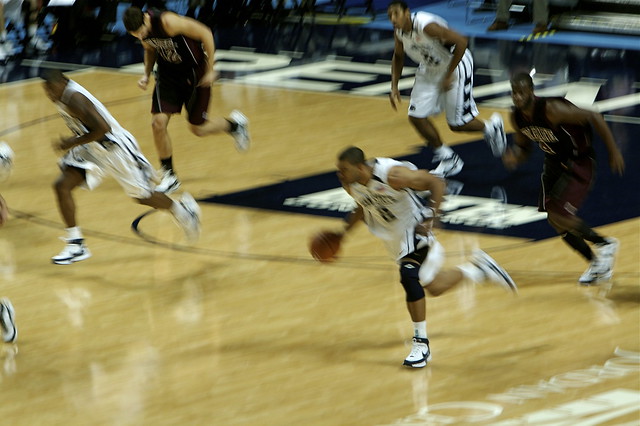We all know the FIRST THREE STEPS are critical for getting back into good transition defense. Those first three steps must be a sprint! In most cases, if the first three steps are a sprint, the following steps will follow suit and players will be in a good position to stop the ball.
But how do you get players sprinting on those first three steps every time?
Solution 1 (this is NOT a good long term solution in my opinion).
During game and scrimmages, the coach can yell SPRINT each time the ball transitions to the other team. This works but you want players to remember on their own.
I did this for our last practice (with our 5th grade girls) and it certainly worked. But I don’t want to continue doing this!
Solutions 2 (I hope this is a better solution)
At our next practice I will try adding some new rules to our scrimmages so players start remembering on their own…
Rule: When the ball transitions to the other team, your first three steps must be a sprint. If not, you lose 1 point.
I will try this and start deducting points from their score each time I see a player breaking the rule. I’ll also be sure to let them know when they lose points.
If that doesn’t work, I might try something else. But my preference is to utilize competitive games with “modified rules” to get the results that we want. That is generally my favorite way to solve problems.
In any case, I plan to experiment to see what works on Friday. I’ll let you know how it goes.
If you have tried anything similar with success, please let me know.
9/21/15 UPDATE: It worked. I tried the new rule on Friday and it was extremely effective. Players were consistently sprinting back on defense. Very simple and efficient way to get the results I was looking for.

Always good to get players reacting off their own initiative, but how do you measure if a player is sprinting! With young players it is all about awareness and then reaction time. One players sprint start may be very different to anothers just on athletic ability. Only way I can think of is the practice in scrimmage situations with repetitions until it becomes habit. I do not require all players to sprint however as I want the ball held up through pressure with at least two back to protect the basket. This can be done with assigning roles just as in offensive transition, but ultimately it is about repetitions to make the reactions instinctive!
Coach – Good points. Yea it’s definitely a judgement call on my part (the coach) on whether they are sprinting or not. It’s not a scientific measurement.
With young kids, it’s pretty much black and white… they are either standing there for several seconds or they are running back. Whether it’s a 75% spring or 100% sprint, I guess I’m not worried about that. Athletic ability certainly isn’t a factor in my judgement… it’s effort. If I feel like they immediately make the effort, I am happy. If not, I will deduct a point. We’ll see how it goes tonight. I think it will work well because I will basically deduct points if I feel the urgent to yell “sprint”. In our last practice, I felt the urgent to yell “sprint” around 60% of the time because not all of them were giving the effort when the ball transitioned to the other team. In most cases, they would all sprint the possession after I told them to sprint. Then the third possession they would forget again. It was pretty obvious when they made the effort and when they forgot.
Regarding “holding the ball up through pressure”, there still should be a quick sprint to positions. So it could still work in your case. Quick transitions from offense to defense is pretty important whether you are half court or full court.
On a side note, if you are working with young kids, I would suggest that you mix in your “holding up in pressure” and “sprinting back to half court” at some point. To be well rounded players that succeed in the future, your players MUST learn how to execute both offense and defense in the half court. Too often youth coaches end up relying too much on the pressure and the transition opportunities it creates. It’s fools gold in the long term. I have coached those kinds of teams at the high school level and those youth kids really struggle because they didn’t learn the half court well enough. I won’t go on a long tangent, but I will say it’s something I believe strongly in.
Yep, all good points,; agree entirely re half court offence even at young age. The R&R concept in its basic layers is a great half court system for youth and works well out of a basic offensive transition. For Dtrans, we certainly expect to expose all players to the need to sprint back on lost possessions. For a turnover it is the closest player to the ball that is responsible for the initial pressure on ball. Though getting them to communicate by yelling Ball is as hard as getting them to sprint initially.